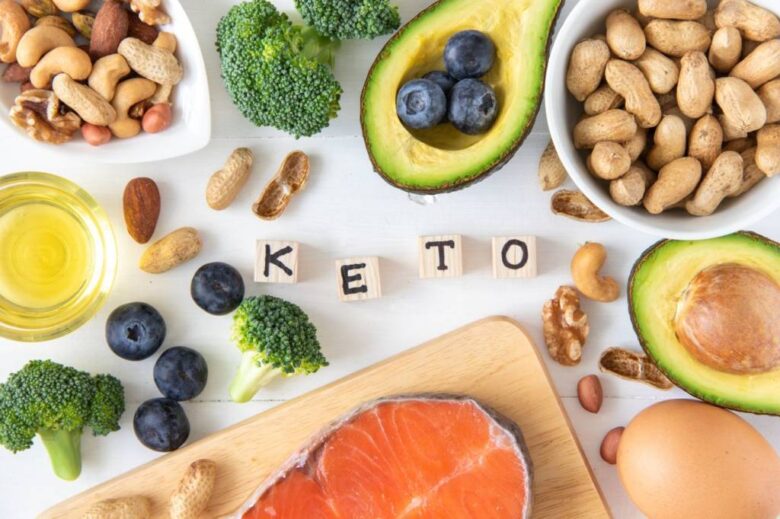People often experience a sense of hope when they embark on a ketogenic diet, as it leads to rapid weight loss, increased energy, and improved cognitive function. Many people who follow a low-carb diet see excellent results. But some get stuck, stagnate, or even gain weight. If this sounds familiar, you might be making common keto mistakes that hinder your progress. The good news is that once you understand these issues, they’re easy to fix. Once you understand these issues, they’re easy to fix. It doesn’t matter whether you’ve done a ketogenic diet before or not. This guide will help you identify and fix any issues so you can resume your weight loss goals.
Too Many Processed Keto Foods:
A common mistake people on the keto diet make is eating too many packaged and cooked “keto-friendly” foods. Advertisers often promote these foods as low in carbohydrates and convenient to consume. But many of them contain unhealthy fats, artificial sweeteners, and preservatives that can make weight loss harder. Just because a snack label says “keto” doesn’t mean it’s a diet based on whole foods. Eating clean, nutritious foods like eggs, leafy greens, grass-fed meats, and high-quality oils can help you reach your goals. So if your pantry is stocked with keto cookies and keto bars, you might want to adjust your grocery list and get back to basics.
Not Tracking Carb Intake Properly:
The ketogenic diet is very restrictive, especially when it comes to the amount of carbs you can eat per day. A common mistake is not calculating how many carbs you’re eating, which can easily throw you out of ketosis. Spices, sauces, dairy, and even vegetables like onions and tomatoes contain carbohydrates. It’s easy to forget to eat if you don’t have a good meal plan or an app to track your food. Even healthy foods can become a problem if you don’t watch how much of them you eat. Monitor your blood sugar levels, learn how to read food labels, and write down what you eat for at least a few days. These steps will give you a full picture of why your weight loss is stalling or slowing down.
Excessive Protein Intake:
Many people think that the ketogenic diet is just a high-protein diet, but that’s not true. It’s high in fat, low in protein, and very low in carbohydrates. When you eat too much protein, your body converts the excess into glucose. This process, known as gluconeogenesis, transforms protein into sugar. This process can knock you out of ketosis, causing your body to stop burning fat. Eating too much chicken, eggs, and meat without adding healthy fats can affect your results. It’s best to eat small amounts of protein and fats, like avocado, grass-fed butter, or olive oil, to help your body stay in fat-burning mode.
Not Paying Attention to Electrolytes and Water:
When you are in ketosis, your body changes its handling of water and salt. When you reduce the amount of carbohydrates you eat, your body releases more water and electrolytes such as magnesium, potassium, and salt. This phenomenon is why many people who start a keto diet feel fatigue, dizziness, and even headaches. We refer to this as the “keto flu.” If you don’t drink enough water and replenish minerals, your energy levels will drop and your metabolism will slow down. As a quick fix, you can add mineral-rich salt to your food, drink plenty of water, and consider taking a beneficial electrolyte pill to maintain balance and keep your body functioning optimally.
Insufficient Fat Intake:
It’s a strange myth that people can’t lose weight on a ketogenic diet because they’re not eating enough fat. Given the long-held belief that obesity is detrimental, it’s understandable that some individuals may be reluctant to fully embrace this approach. But with the ketogenic diet, fat is more than just fuel; it’s the foundation of the diet. If your body doesn’t get enough fat from food, it doesn’t know how to burn its fat stores for energy. If you’re on a low-fat diet or not eating enough nuts, oils, and fatty meats, your results will be worse. Don’t be afraid of getting fat. Allow your body to function naturally and relish the experience.
Not Eating Enough or Skipping Meals:
A ketogenic diet can help you feel less hungry, which is a great way to naturally control your weight. However, skipping meals or drastically reducing your calorie intake can be detrimental. To ignite a fire, your body requires fuel. If you don’t eat for an extended period, your metabolism may slow down to conserve energy. This makes it more difficult to lose weight. Skipping meals can lead to overeating, which can disrupt your macros and take you out of ketosis. Avoid forcing yourself to eat at a specific time. Instead, eat when you’re hungry and ensure that your diet is healthy and balanced. You don’t have to eat less; you just have to eat better.
Not Giving Yourself Enough Time:
A common mistake people make is not giving the keto diet enough time to work. If their weight doesn’t change within the first week or two, many people give up because they want to see results as soon as possible. The truth is, it can take a few weeks for your body to get used to burning fat for energy, especially if you’ve been eating many carbs. You might initially lose weight due to water loss, but it takes time and dedication to shed fat. Trust the process. Be patient with your body, note your non-weight-related successes, and be aware of your feelings. If you stick with it, you will be rewarded.
Conclusion:
When done right, the ketogenic diet can be a great way to lose weight and improve your overall health. Often, individuals impede their progress by committing straightforward errors that they can rectify. These mistakes can hinder your success, such as relying on processed foods, measuring your macronutrients incorrectly, or not eating enough, and not expecting immediate results. You can break through the plateau and make progress if you learn more about your body and make smart changes. Remember, the keto diet is not about perfection. The most important thing is to find a method that works for you and stick with it. Hold off on making any changes; allow your body to adapt at its own pace.
FAQs:
1. I’m on a ketogenic diet. Can I eat fruit?
Naturally sweet foods are high in sugar, which can quickly add up when you’re on a ketogenic diet. Berries are fine in small amounts, but bananas, apples, and grapes are best avoided.
2. How do I know if I’m in ketosis?
Ketones can be detected in your urine or breath, and you may also experience increased energy, reduced hunger, and a clearer mind. You can determine your condition using ketone test strips.
3. Is it normal to feel worn out when you first start the keto diet?
To answer your question, you may feel uncomfortable for a few days as your body adjusts to burning fat. To help alleviate the symptoms, you should stay hydrated and eat more nutrients.
4. How long does it take to lose weight on the ketogenic diet?
If you stick to the plan and follow it correctly, you should start losing weight within one to three weeks. At first, you’ll likely only lose water weight.
5. How long can I follow the ketogenic diet?
Long-term ketosis is safe for many people, but it’s important to check in with your doctor regularly and make sure you’re getting all the nutrients you need through a balanced diet.




